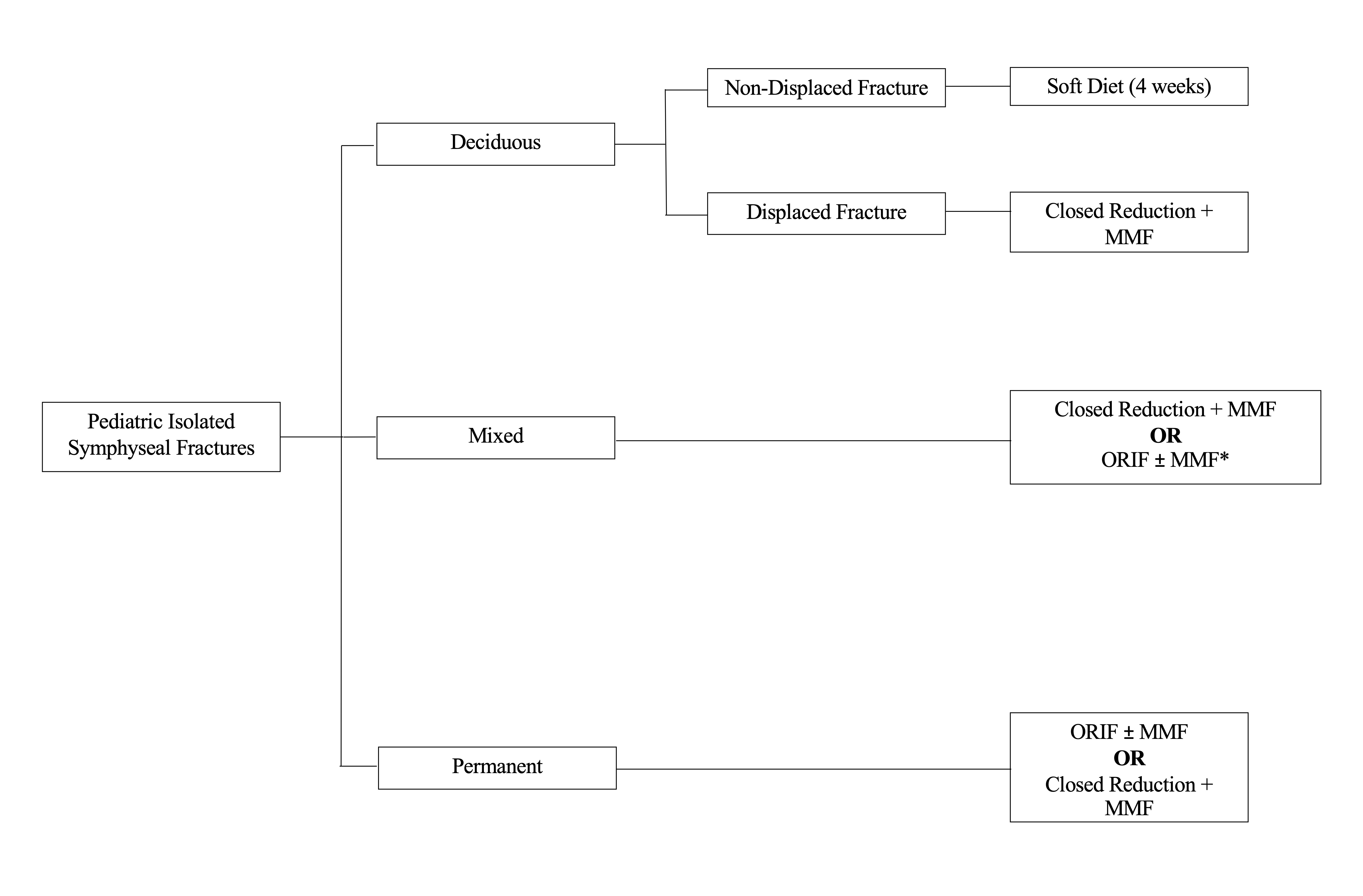Managing Isolated Symphyseal and Parasymphyseal Fractures in Pediatric Patients: A Single Institutionís Experience over 29 Years
Pooja S. Yesantharao, MS1, Joseph Lopez, MD MBA1, Alvaro Reategui, BS1, Richard J. Redett, MD1, Paul N. Manson, MD1, Amir Dorafshar, MBChB2.
1Johns Hopkins School of Medicine, Baltimore, MD, USA, 2Rush Medical College, Chicago, IL, USA.
Background: Isolated symphyseal and parasymphyseal fractures represent a unique, unstable injury pattern that can cause significant morbidity in children. However, this particular mandibular injury pattern has not been well-characterized in children. Given the unique biomechanics of this region and its importance in long-term dental development and occlusion in pediatric patients, focused study of pediatric symphyseal and parasymphyseal fractures is necessary. Thus, this study investigated isolated symphyseal and parasymphyseal mandibular fractures in pediatric patients, in order to provide treatment recommendations to improve long-term post-treatment outcomes.
Methods: This was a 29-year retrospective, longitudinal cohort study of pediatric patients with isolated symphyseal/parasymphyseal mandibular fractures. Patient data were abstracted from the medical record. Predictor and outcome variables were compared amongst dentition groups using two-tailed Mann-Whitney U tests and Fischerís Exact analyses as appropriate. Multiple logistic regression with forward stepwise selection of predictors was used to generate adjusted odds ratios for complications.
Results: Fourteen patients met inclusion criteria during the study period, of whom 2 (14.3%) had deciduous dentition, 7 (50.0%) had mixed dentition, and 5 (35.7%) had permanent dentition. Patients with deciduous dentition were significantly more likely to receive soft diet or maxillo-mandibular fixation (MMF) than open reduction and internal fixation (ORIF) when compared to patients with mixed or permanent dentition (p = 0.04). The post-treatment complication rate was 40% among all patients treated with ORIF, 16.7% among patients who underwent closed treatment with MMF, and 75% amongst patients treated with soft diet (though two patients who received soft diet had permanent dentition and thus were inappropriately managed). The most common complication overall was malocclusion (20%). A treatment algorithm was proposed based on study data and senior authorsí expertise; adherence to the algorithm significantly decreased odds of complications (odds ratio: 0.03, 95% confidence interval: 0.001-0.6). The Figure demonstrates the treatment algorithm for this fracture pattern in children.
Conclusions: This study characterized isolated symphyseal/parasymphyseal mandibular fractures in pediatric patients over a period of 29 years. As demonstrated in this study, children presenting with this fracture pattern have unique risks for long-term growth disturbances and dental development, due to the instability of mandibular symphysis or parasymphysis fractures as well as the tooth-bearing nature of this mandibular region. The etiology, management, and outcomes of symphyseal/parasymphyseal mandibular fractures in children varied by dentition stage. Using this data, a treatment algorithm was proposed, stratified by dentition stage, in order to optimize outcomes for children presenting with this fracture type. 
Back to 2020 Abstracts
